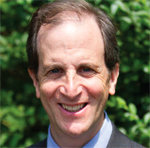Mr. Kaufman notes that a rheumatologist should determine how far patients are willing to travel. “If a doctor is setting up a practice in an office building, he will likely need a broader reach to get patients,” he says. “A retail practice would rely on the more immediate population.”
Because she trained at HSS, Dr. Levine was familiar with the population served by the hospital. “As I specialize in caring for patients with lupus, rheumatoid arthritis and other complex autoimmune rheumatic diseases, it was important for me to remain at a center that specializes in these conditions and is accessible for patients with these diagnoses,” she says.
Area Competition
Taking population demographics a step further, you will also need to look at how many other rheumatologists practice in your targeted area and if there are enough patients who need all of them. “If you can determine what percentage of a population [comprises] potential patients and you create a 25-minute drive time radius around your prospective location, you can estimate the number of prospective patients who are accessible to your location,” Mr. Eigen surmises. Using a radius of twice that distance and finding the rheumatologists within that radius will give you a clear picture of your competition. “Once you assess the competition, understand the prospective patient population and determine the target number of patients you would require to have a successful practice, then you can make some intelligent inferences as to where your practice should be located,” he says.

Mr. Kaufman
Mr. Kaufman says a rheumatologist should contemplate the stage at which your practice is developed and your patients’ level of loyalty. “If a rheumatologist is starting a practice and does not have a loyal following, it is particularly important to find an underserved area,” he says. “But if a doctor has a large and loyal patient base, this concern may be mitigated by the trust built with his patients, and the doctor may be able to locate the practice in a site that better meets some of their other needs.”
Having trained at Weill Cornell Medical College in New York City for her residency and HSS for her fellowship, Dr. Levine says she’s been fortunate to maintain relationships with colleagues she trained with and many of her teachers in primary care and other subspecialties, which has helped in building her practice.
Cost Considerations
Cost is always a factor to weigh; however, don’t do it in a vacuum. “One location can be much more valuable than another for numerous reasons, including accessibility and competition, as well as the quality, appearance and the management acumen of its ownership,” Mr. Eigen says. “Another consideration is an area’s trends. Is it growing and attracting new families? Are new residential buildings being constructed? If so, these are opportunities for new patients.”

